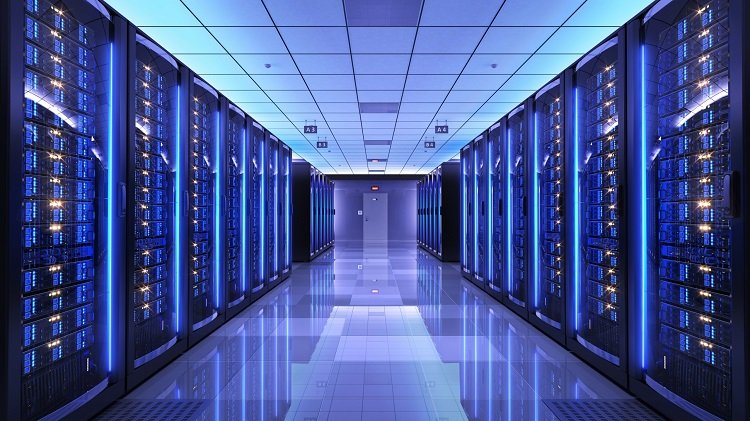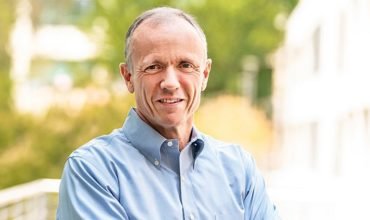Data Centers are an indispensable part of the computing world. An estimated data center energy usage varies from 200 terawatt-hours to 500 terawatt-hours. 200 TWh is approximately equal to 1% of global electricity usage. With so much energy consumption, data center energy efficiency strategies are in demand now.
 With the adoption of data-intensive applications like Artificial Intelligence, there is a significant increase in the power consumption of data centers. This consumption of electricity is said to only increase with the demand for cryptocurrency, 5G and smart cities. Researches show that improved infrastructure designs and energy efficiency strategies can keep the data center energy use relatively low.
With the adoption of data-intensive applications like Artificial Intelligence, there is a significant increase in the power consumption of data centers. This consumption of electricity is said to only increase with the demand for cryptocurrency, 5G and smart cities. Researches show that improved infrastructure designs and energy efficiency strategies can keep the data center energy use relatively low.
The right-sizing of infrastructure equipment, as well as the deployment of optimally constructed rack layouts and distribution, are critical to achieving the desired energy efficiency. Companies like VMWare are committed to reducing energy consumption, particularly the carbon footprint of data centers. This is evident from their 2030 Agenda where they strive to achieve 30 goals by 2030, one of the key being sustainability.
“As the pioneer of data center virtualization in the late 1990s, VMware has always been committed to making data centers greener. In the past 13 years, virtualization of servers has saved an estimated 340 million metric tons of carbon dioxide from entering the atmosphere, according to IDC,” said Ihab Farhoud, Director, Solutions Engineering – METNA, VMware Middle East, Turkey and North Africa.
A green data center is a data storage, management, and dissemination facility with mechanical, lighting, electrical, and computer systems that are optimized for energy efficiency and minimal environmental impact. Advanced technology and techniques are used in the design and operation of a green data center. Though green data centers are expensive upfront, it makes a huge impact on energy efficiency with an added bonus of environmental safety.
The planning stage
Energy efficiency plans should be implemented from the concept and design stage of the data center. Only then can these design objectives be achieved with the selection of the right energy efficient subsystems during construction. Due to varying load demands in data centers, it is important to implement variable capacity management systems to reduce loss and improve efficiency.
A concern is the lack of energy cost recognition and a reluctance to use available energy-saving solutions. There are solutions on the market that deliver high efficiencies while maintaining reliability. There is a rapid growth in data center energy use without fully considering the efficiency progress made by the industry. Solutions like that of Eaton is said to have designed to prevent energy loss and waste throughout the entire process.
“Eaton provides the complete critical power chain solutions from medium voltage transformer to the power distribution PDUs inside the IT Rack, including UPS systems, Static transfer switches, RPPs and Busways. Eaton provides the DCIM solution and the Foreseer EPMS system to orchestrate the entire infrastructure based on real-time data,” said Ashraf Yehia, Managing Director, Eaton Middle East.
Legacy Data Centers
Though companies implement and activate the energy efficiency strategies since the planning stage, and this is practical only in new constructions, but what about the legacy data centers that are up and running for over 10 or 15 years. The legacy data centers can also use few energy-saving techniques, since they run 24*7.
Huge investments are not required to optimise a legacy data center into energy efficient one. A modest investment with a proper plan is all that is necessary. Once the problem areas are identified, appropriate energy efficiency improvement solutions can be applied either by upgrading or replacing the specific subsystems, and even the slightest improvement in efficiencies can make a huge difference at the end of the year or even quarter.
Virtualization is key in energy efficiency. Companies need to explore the possibility of consolidation of the IT load through virtualization. “Virtualization minimizes underutilized hardware capabilities and significantly reduce the power consumption and heat load in the data centre,” said Yehia.
“To manage the higher power densities in the virtualized environment, optimize the rack layout and airflow management using containment systems,” he further added. The cooling systems used in most legacy data centers date back to an era of significantly lower power densities and cooling alone accounts for 30-40% of total power.





